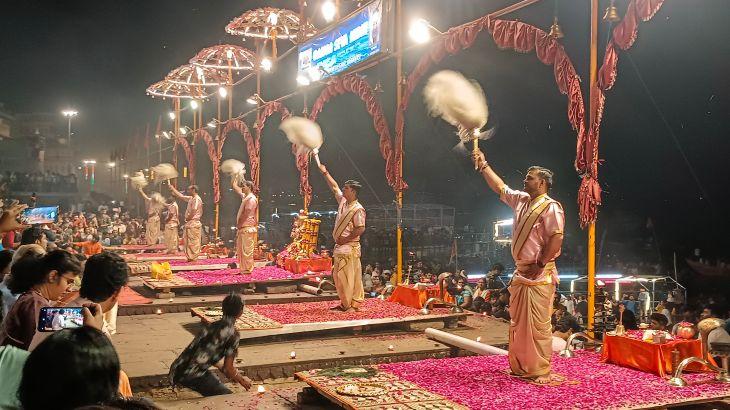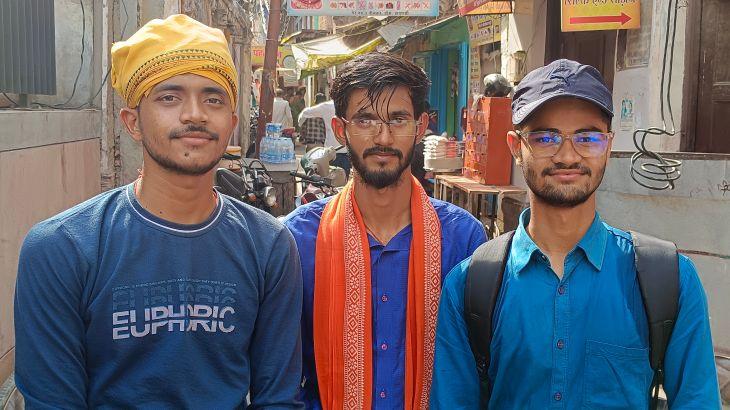Source: ALJAZEERA
ALJAZEERA MEDIA NETWORK

Discover how the younger generation in India, particularly Gen Z, is turning to spiritual tourism over traditional party destinations, thanks to the influence of social media and better transport connectivity.
Varanasi, India – In India, some members of Generation Z prefer temples over nightclubs.
Shivam Dwivedi, a native of Prayagraj district in the northern Indian state of Uttar Pradesh, prays at a neighbourhood temple at least twice a week.
The 19-year-old and his friends have shunned trips to beach and party destinations popular with this age group. Instead, Dwivedi and his friends Saurabh Shukla, 21, and Anand Dwivedi, 20, prefer to visit important Hindu shrines, some in remote corners of the country.
The friends, who are studying engineering, told Al Jazeera they get mental peace and find a “source of energy” on their trips to religious places.
Parties and a dazzling nightlife do not attract them, Shivam Dwivedi added. “We have never planned a visit to Goa and other such places where people go just for raging parties, casinos and nightlife. We want peace and positivity that is available in religious places and in nature,” he explained.
 These college students prefer religious holidays over party spots in India
These college students prefer religious holidays over party spots in India
Faith-based holidays make up 60 percent of India’s domestic tourism, according to a March report by the real estate consultancy CBRE South Asia Pvt Ltd.
The industry is estimated to grow at a compounded annual rate of 16.2 percent and is likely to reach $4.6bn in size by 2033, according to the report.
Some of that business is being driven by members of Gen Z (those born between 1997 and 2012).
The consecration of the Ram temple in Ayodhya in January and coverage of the event in social and news media have helped fuel interest.

Giresh Vasudev Kulkarni, founder of Temple Connect, a company that provides information on Hindu temples to global pilgrims, said the widespread use of social media coupled with curiosity among young people has helped lead to an increase in spiritual tourism in the country.
“The young generation is completely hooked to social media where people are creating content by reaching even those places which were considered far off and remote till a few years ago. Such contents when posted on YouTube and other social media platforms generate curiosity among people, especially youths to visit there for making similar content or to offer prayers,” Kulkarni explained.
Santosh Singh, founder of Spiritual Tour, a Varanasi-based company that offers tours to religious places, pointed out that the inauguration of the Ram temple in Ayodhya was a major breakthrough in the rise of spiritual tourism.
New roads connecting Varanasi and Ayodhya, both cities in Uttar Pradesh, have cut travel time down to four hours from six, he said.
Pilgrims have also been tacking on a trip to Sarnath, about 10km (6 miles) northeast of Varanasi. It is considered the place where Gautama Buddha gave his first sermon after attaining enlightenment.
In 2015, the federal government introduced a scheme called the Pilgrimage Rejuvenation and Spiritual Heritage Augmentation Drive, or PRASHAD, which is Hindi for food offered to the gods. Under that scheme, it has spent 16.3 billion rupees ($195.43m) to develop infrastructure around 73 religious sites.

It has also introduced high-speed trains connecting some of these sites with other big cities and has proposed international airports in cities like Ayodhya and Puri, providing easier access to foreign tourists. It also offers interest-free loans to states to set up malls to showcase their unique products.
Your email address will not be published. Required fields are marked *